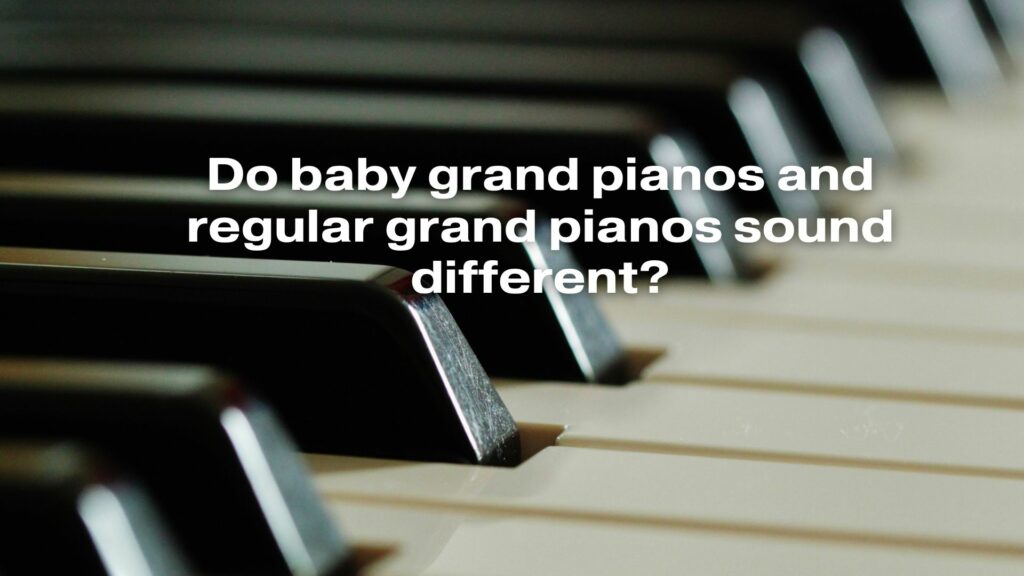Baby grand pianos and regular grand pianos are both types of grand pianos, and they share certain characteristics in terms of sound due to their similar design principles. However, there can be variations in sound based on factors like size, construction, and the specific model of the piano. Here’s a breakdown of the sound characteristics of both types of grand pianos:
1. Size and Sound Volume:
- Baby Grand Piano: Baby grand pianos are smaller in size compared to regular grand pianos. This can affect the overall volume and projection of sound. Baby grands may have a slightly less powerful sound, but they can still produce rich, resonant tones suitable for many musical genres.
- Regular Grand Piano: Regular or full-sized grand pianos are larger and have longer strings, a bigger soundboard, and more substantial sound-producing components. This generally results in a more robust and powerful sound with greater projection and dynamic range.
2. Tone Quality:
- Baby Grand Piano: Baby grand pianos are often prized for their clarity and sweet, singing tone. They can produce a warm and pleasant sound that is well-suited for classical music, jazz, and various other genres.
- Regular Grand Piano: Full-sized grand pianos tend to have a wider range of tonal capabilities. They can produce a more diverse range of tones, from soft and delicate to bold and thunderous. This versatility makes them preferred choices for professional pianists and concert performances.
3. Resonance and Sustain:
- Baby Grand Piano: Baby grands, although smaller, can still exhibit good sustain and resonance. The resonance is generally more focused and may lack some of the complexity found in larger grand pianos.
- Regular Grand Piano: Larger grand pianos tend to offer longer sustain and richer resonance due to their greater soundboard area and string length. This can provide a more immersive and immersive playing experience, particularly for advanced pianists and in larger concert settings.
4. Playability:
- Baby Grand Piano: Baby grand pianos can be highly playable and responsive, making them a great choice for pianists at various skill levels. Their action (the mechanism that transfers the energy from key presses to hammers striking the strings) can offer a satisfying playing experience.
- Regular Grand Piano: Full-sized grand pianos often have high-quality actions that are known for their responsiveness and precision. Professional pianists often prefer the action of regular grand pianos for its ability to accommodate demanding musical passages.
In summary, while baby grand pianos and regular grand pianos share common characteristics due to their grand piano design, there can be differences in sound quality, volume, and playability. The specific sound differences depend on factors such as the size of the piano, the quality of construction, and the brand. It’s essential to consider your musical needs and preferences when choosing between these two types of grand pianos, as both can offer exceptional musical experiences.


